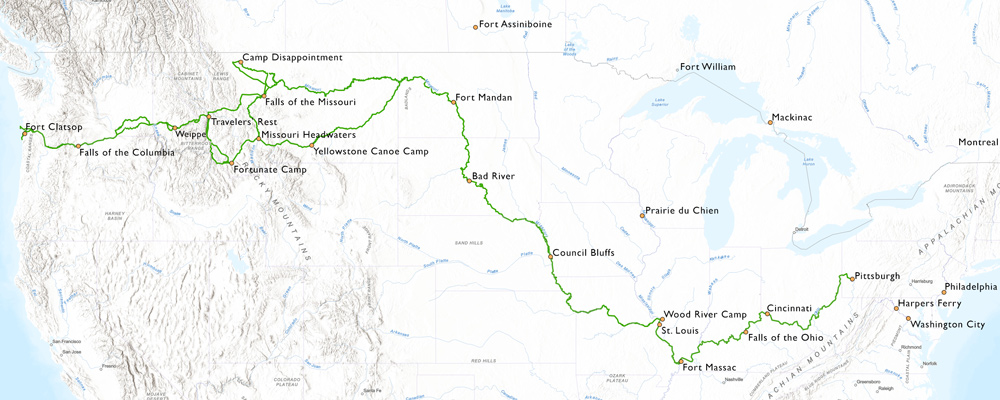
Starting with its genesis in Jefferson’s Monticello, Lewis’s training and preparations in Philadelphia, and the barge‘s (called the ‘boat’ or ‘barge’ but never the ‘keelboat’) excursion down the Ohio River, the route they took, often called the Lewis and Clark Trail, crosses the continent and weaves an epic tale of western exploration treasured by many today.
Synopsis of the Expedition
by Harry W. Fritz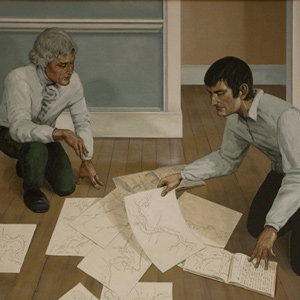
The entire story is told in these five webpages.
Lewis & Clark by Air
by Jim Wark, Joseph A. Mussulman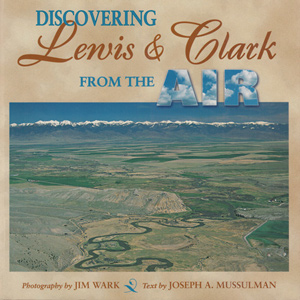
Aerial photographer Jim Wark and scholar Joseph A. Mussulman offer a fascinating new perspective on the Corps of Discovery’s historic journey. From Monticello in the east to Fort Clatsop on the Pacific Ocean, the entire 2004 book is provided online with updates by Mussulman.
Eastern Beginnings
Washington City and Philadelphia
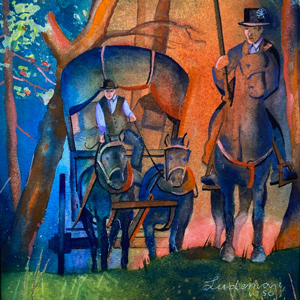
Before leaving for Pittsburgh, Lewis traveled between Jefferson’s home Monticello, Washington City, Harpers Ferry, and Philadelphia as plans coalesced and preparations ensued.
Down the Ohio
Pittsburgh to Fort Massac
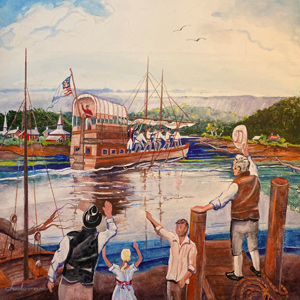
On 31 August 1803, Lewis and his crew embarked from Pittsburgh and headed down the Ohio River.
Up the Mississippi
Cairo to Cahokia, Illinois
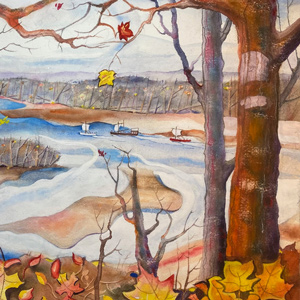
On 20 November 1803, after nearly a week encamped at the mouth of the Ohio, the new recruits would be tested while propelling the large boat—known today as the keelboat—against Mississippi River current. They safely navigated around the Grand Tower, but learned at Fort Kaskaskia that the Spanish would not allow them past St. Louis.
Winter at St. Louis
December 1803 to May 1804
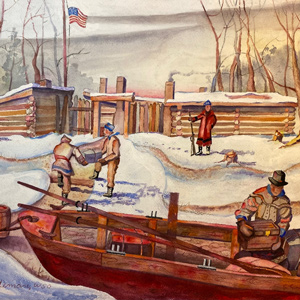
During the winter of 1803–04, everything had to come together: the enlisted men, the boat men, the provisions, and the transfer of Louisiana to the United States.
Starting Up the Missouri
St. Louis to the Kansas River
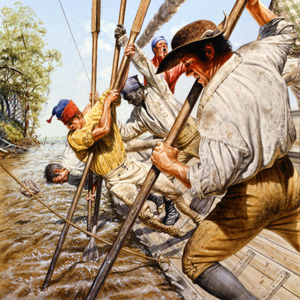
Leaving St. Louis, on 14 May 1804, the flotilla crosses the present state of Missouri to arrive at the mouth of the Kansas River.
Past the Omahas
Nebraska and Iowa
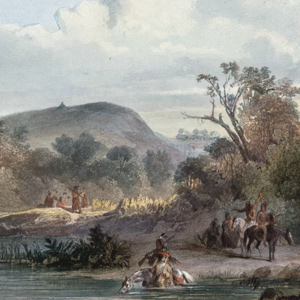
Following the Missouri River along the present-day Nebraska-Iowa border, the captains pay their respects to the late Omaha chief, Blackbird and conduct their first two Indian councils. Sergeant Charles Floyd becomes ill and passes away.
Among the Yanktons
Nebraska and South Dakota
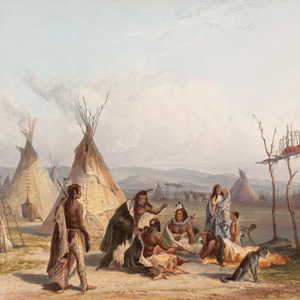
The stretch of the Missouri River along the present-day border between Nebraska and South Dakota was a flurry of activity. In just three days, a detachment visits the “Mountain of Little People,” today’s Spirit Mound, Patrick Gass is promoted to sergeant, and they first encounter the Yankton Sioux.
Crossing the Lakotas
North and South Dakota
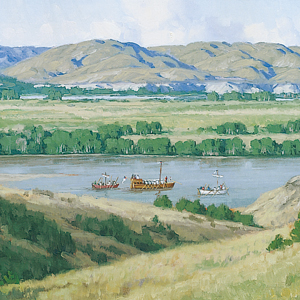
The expedition meets the Lakota Sioux, and the encounter goes badly for both. They reach the lower Knife River Indian Villages, council with the Mandans and Hidatsas, and find a site to spend the winter.
Winter at Fort Mandan
November 1804 to April 1805
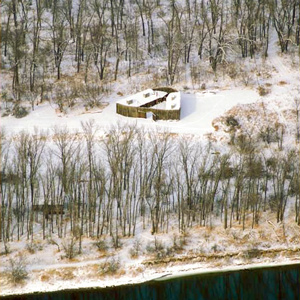
At the Knife River Villages, the winter of 1804–05 is brutally cold but the nearby Mandans and Hidatsas prove to be warm hosts. The captains hire trader Toussaint Charbonneau as an interpreter on the condition that he bring his Shoshone wife, Sacagawea. On 11 February, she gives birth to the couple’s first son, Jean Baptiste.
Along the Northern Reach
North Dakota and Eastern Montana
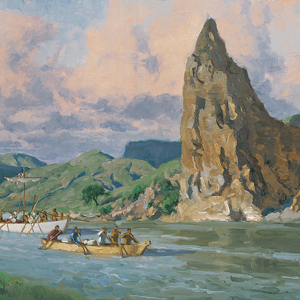
The Missouri River’s northernmost reach crosses western North Dakota and eastern and central Montana. The region may be barren, but geological riches include the Fort Union Formation and the “seens of visionary inchantment” in the Upper Missouri River Breaks.
Portaging the Falls
The Great Falls of the Missouri
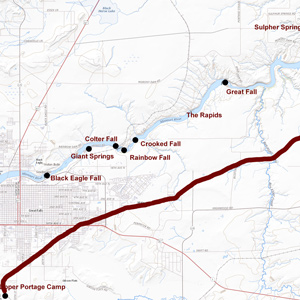
Lewis finds that the Falls of the Missouri are “truly magnifficent and sublimely grand” and Clark finds that the portage around them would be long and difficult. Sacagawea becomes “gravely ill.” Before continuing, they must build two new canoes to replace the cached pirogues.
Gates of the Rockies
End of the Missouri
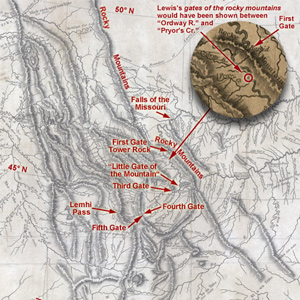
As the Missouri River flows south along the eastern edges of the Rocky Mountains, Clark lists each river constriction as a gate. Throughout this course, the river forks two times with each fork one-third the size than previous. The men are encouraged when Sacagawea starts seeing familiar landmarks. Scouting ahead, Lewis crosses the Continental Divide and meets the Shoshone. Meanwhile, Clark and the boats reach the end of the navigable river.
Down the Western Valleys
Lemhi and Bitterroot valleys
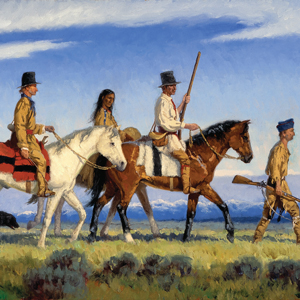
Aided by the Lemhi Shoshone Chief Cameahwait, Sacagawea’s brother, they begin a slow process to acquire horses, move necessary equipment and supplies across Lemhi Pass, and to cache the rest. They stumble across the Lost Trail divide, buy more horses from the Flathead Salish, and proceed down the Bitterroot River to Travelers’ Rest.
Over the Bitterroots
K’useyneiskit along the Lolo Trail
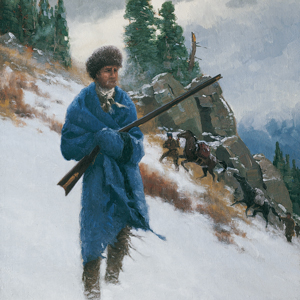
With Toby as their guide, the expedition leaves Travelers’ Rest and crosses the Bitterroot Mountains following an Indian road known today as the Lolo Trail. They encounter winter conditions and suffer from a lack of food. On the other side, Nez Perces at Weippe Prairie welcome the weary travelers.
Among the Nez Perce
Clearwater and Snake rivers
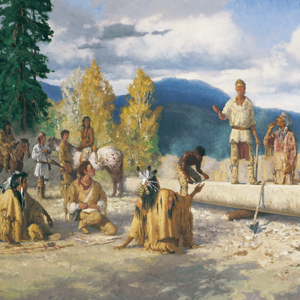
Tired and physically sick, the travelers recover and those who can, work to build five dugout canoes at camp on the Clearwater River. With no time for portages and despite the help of two Nez Perce river guides, several canoe accidents happen while negotiating rapids on the Clearwater and lower Snake.
Down the Columbia
Washington and Oregon
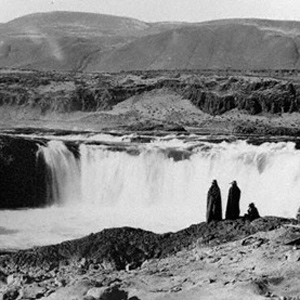
The best paddlers steer through The Dalles and Cascades of the Columbia without incident, and they all continue downriver passing numerous Lower Chinookan villages. After three weeks hunkering down in dismal nitches and bays, they cross to the southern shore and encamp at Tongue Point.
Winter at Fort Clatsop
December 1805 to March 1806
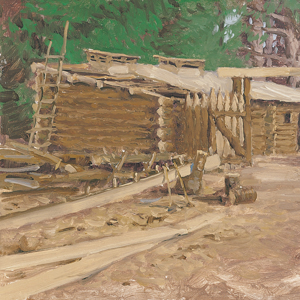
During their stay at the Pacific coast, they hunt elk, make salt at the beach, and buy fish, wapato, and conical hats from the Clatsops and Kathlamets. When Clark leaves to get blubber from a beached whale, Sacagawea—who still hasn’t seen the ocean—insists she be included in his group. In the spring, they are eager to leave.
Return to the Clearwater
Fort Clatsop to Long Camp
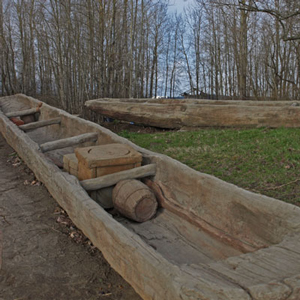
On their way up the Columbia River, they stop to hunt and dry meat, and to investigate the Willamette and Sandy rivers. Canoes are eventually traded or abandoned by the time they reach the Walla Walla River, they travel by horse to the Snake River. They encamp for several weeks waiting for mountain snows to melt.
On the Road to the Buffalo
Weippe to White Bear Islands
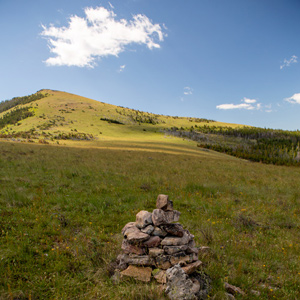
After splitting up at Travelers’ Rest, Lewis took a shortcut back to the Great Falls of the Missouri and then explored the upper Marias River.
Clark on the Yellowstone
Travelers' Rest to North Dakota
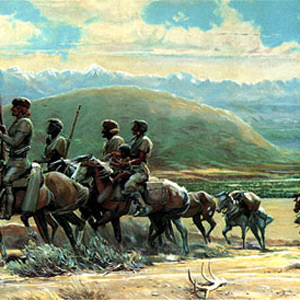
Clark leads a large group from Travelers’ Rest to the Beaverhead River where supplies and canoes are cached. Ordway takes the canoes to the Falls of the Missouri and Clark’s group paddles the Yellowstone in two small canoes lashed together. Pryor’s group must use bull boats after all the horses are stolen by Crows.
Lewis on the Marias
Cut Bank Creek to North Dakota
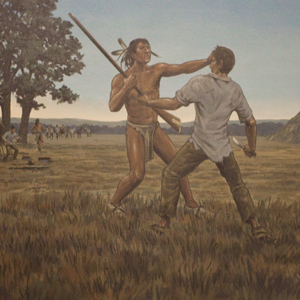
With only three others, Lewis continues his June 1805 exploration of the Marias River hoping to find its source north of the 50th parallel. They find that it flows south of the 49th. Heading back, they come across a small group of young Blackfeet, and the encounter turns fatal. Both groups flee.
The Final Leg
Reunion Bay to St. Louis
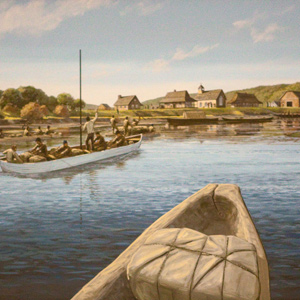
Leaving Reunion Bay, the members travel together for the first time since Travelers’ Rest. They drop off the Charbonneau family at their village and pick up Chief Sheheke and interpreter René Jusseaume. The citizens of St. Louis, having given them up for dead, provide a boisterous welcome.
